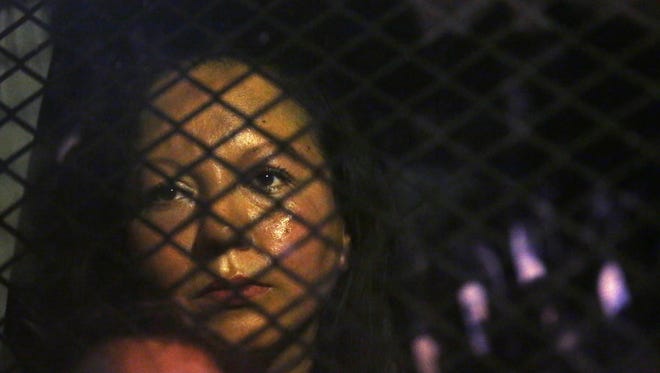Arizona's new Rosa Parks: EJ Montini
A mother of two decides to show the rest of us how the face of mass deportations would look.

She could have run. She didn’t.
She could have sought sanctuary in a church. She didn’t.
She could have skipped her appointment at the Phoenix office of U.S. Immigration and Customs Enforcement and faded into the background. Hundreds of thousands of men, women and children have done that. Millions.
Not her.
Guadalupe Garcia de Rayos decided, in her own way, for her own reasons, that she was no longer going to sit in the back of the bus.
There is danger coming out from the shadows.
She did so anyway.
Then again, she’s been in the sunlight for a long time. She wasn’t going to retreat into the darkness.
If anything, she decided to show the rest of us what the face of mass deportations would look like.
It will look like her. A 35-year-old mother of two American-born kids. A woman brought here as a 14-year-old, reared here, working here. Not anything grand or glorious. Custodial work. Just enough to make a living. To set an example for her children.
America you can fix this: EJ Montini
Trump's Big Lie imperils the republic: David Andelman
"I'm only a mother who fights for my children. I faced (ICE) because I didn't want to be hiding, I don't like that,” she said. "We are going to move forward."
Garcia de Rayos was swept up in a raid at Golfland Sunsplash back in 2008, one of then-Sheriff Joe Arpaio’s workplace raids.
She was discovered to have used two Social Security numbers that didn’t belong to her. Couldn’t belong to her. She eventually accepted a charge of criminal impersonation. The lowest class of felony.
She’s been cooperating with ICE since. She was granted a deportation stay, which allowed her to obtain a work permit. With that, she went back to her custodial job at Golfland.
She’s been reporting to ICE regularly. Once a year at first. Then every six months.
She knew of President Trump’s executive order expanding the range of offenses for which the Department of Homeland Security can target those like her, individuals who have caused no trouble, who have strong family ties and records for relatively minor offenses.
ICE took her into custody last week during her regularly scheduled check-in, then deported her to Mexico.
Her two children were there to watch and have been vocal at the protests supporting their mother.
Her daughter Jackie is 14, the age Guadalupe was when she was brought to the U.S. Her son Angel is 16.
Earlier this month, Trump told the president of Mexico that he was prepared to send U.S. troops if necessary to deal with “bad hombres” from south of the border.
POLICING THE USA: A look at race, justice, media
My friend was an illegal immigrant. I miss him: Voices
Garcia de Rayos doesn’t quite fit the description.
She is more Rosa Parks than Ma Barker.
Still, she was loaded into a caged vehicle and deported.
This has made her the face of millions of people like her, people we must find a way — a humane way — to deal with.
Her son Angel said, “She showed up year after year (at ICE) because she knows she’s not a criminal. She followed the law. A criminal wouldn’t show up. A good person is the one that shows up before a judge and officials.”
He’s right.
But good people get caught up in bad public policy.
In this case, Guadalupe Garcia de Rayos was forced to the back of the bus, where the windows have wire mesh over them.
EJ Montini is a columnist for The Arizona Republic, where this piece first appeared.
You can read diverse opinions from our Board of Contributors and other writers on the Opinion front page, on Twitter @USATOpinion and in our daily Opinion newsletter. To submit a letter, comment or column, check our submission guidelines.